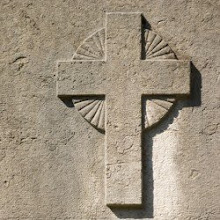Just about half way home in our review. I’m doing another read the same time as this, and both books are on spiritual growth. The other is CPH’s new release from Dr. John Kleinig, “Grace Upon Grace.” While both touch upon similar topics and both are written by Lutheran pastors, they yet differ greatly in their thrust.
One major difference one instantly recognizes is Kieschnick’s tendencies to quote from non-Lutheran sources. Here he admits going to such as a C. Peter Wagner class for spiritual help. When one is really in trouble, who do you turn to? This determines where one is coming from theologically. Why do they turn to Fuller Seminary and CGM experts for their help in time of need? Makes one think they truly feel their Lutheranism doesn’t provide what is really needed. Basically, they’ve given up on it as their confession and practice in many areas.
To go to the likes of Carl George, Wagner, Francis de Sales, Henry Blackaby (which someone else here on this Discussion has posted some evaluation) and Robert Mulholland is significant for help in prayer life. Kleinig goes to Luther. Huge difference in orientation. Using Mulholland as a source, Kieschnick is prone to bring personality analysis and psychology into play here, which is typical of much of the CGM. Kieshnick admits that he has been set free from all of these influences (page 125). He boils it down just “to regularly communicate with him (God).”
As opposed to Kleinig, Kieschnick sees Luther’s Morning and Evening Prayers along with the Lord’s Prayer as powerful, yet didn’t teach him to pray conversationally. (page 128) He hasn’t gone back, and raves about never using printed prayers. Kieschnick’s advice is to find what works for you as an individual: “not to implement a single plan for prayer, but to experiment with a wide range of practices, find some that fit your personality, and use those practices to connect with God in rich, meaningful ways.” (page 129)
Kleinig and Kieschnick have some common things to say about prayer and significantly different emphases. Kieschnick is much more individualistic in prayer life while Kleinig suggests more of the classical, Lutheran prayer life. Noteworthy here is Kleinig’s always stressing the tie to prayer life and the Divine Service, which in previous Kieschnick chapters we have seen its omission. One will find strikingly more emphasis in Kleinig’s prayer life on Christ and His enemy, the devil, than in Kieschnick. Kieschnick exhibits a much more pragmatic, what works, prayer advice. He has searched many resources and says ‘whatever works’ for you is good. He is silent on attaching to the great prayer and devotional practitioners of old. Kieschnick is much more on technique than theology. Reader beware.
Greater is He that is in you than he who is in the world!
Pastor Rod Zwonitzer
Click here to continue to the next part of Pastor Zwonitzer's review.





No comments:
Post a Comment